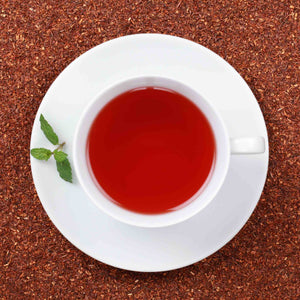Zellige & Mint Tea
Nov 24, 2020
Ritual & Secrets of Mint Tea
Mint Tea & Zellige Art
The art of Zellige (Arabic: زليج , meaning "small polished stone") was born in Morocco in the 10th century.
Zellige is a mosaic whose tesserae are pieces of glazed terracotta.
And since then, the tiles of Zellige decorate the most beautiful monuments in Morocco, the Maghreb and around the world. They adorn the walls and fountains of palaces and mosques with highly ornate geometric patterns.
It is a natural or glazed and colored terracotta tile. Traditionally, it is made with clay from the region of Fez (Morocco). This secular art finds its origin in ancient mosaics.
According to Moroccan artisan tradition, each tesserae is still cut by hand and then assembled on a bed of mortar to form a geometric assembly.
This decorative expression was born from the desire of the Artists to create spatial decorations avoiding living representations, in accordance with the precepts of Islam.
White and brown, originally, Zellige is adorned with blue, green and yellow (from the 14th century) then red (from the 17th century). Nowadays, the colour palette has grown considerably in order to meet the demands of authentic ceramics lovers.
An excellent invitation to meditate in colour around a Mint Tea …
An invaluable know-how
This production, which remains traditional, gives an original decoration of high quality. The whole process is done under the direction of " Mâalem " (in Arabic: معلم ) - literally "he who has a know-how", is a Master-Craftsman or a Master of Art.
Assisted by kussar (Arabic كسار ) - the craftsman responsible for cutting the tiles into tesserae - the Mâalem
The first stage of the production is the clay molding ( Mazhari in Arabic مزهري ). This is followed by the calibration and drying of the formed tile, then its first firing.
The tiles, about ten centimeters per side, are then glazed and fired. The tiles of different colors are then cut according to defined geometric shapes that allow their nesting.
This artisanal cutting made by the Kussar with his sharp hammer named Menqach (Arabic منقاش ) . which reveals a fine border of exposed terracotta around the perimeter of the tesserae.
The Patrons of the Art of Zellige
Patrons of art have used Zellige to decorate major monuments and their homes as a statement of architectural excellence and sophistication.
The Moorish art of Zellige flourished during the Nasrid dynasty and especially the Merinid dynasty which gave it more importance around the 14th century.
The Marinids form a dynasty of Zenata Berber origin, native to the highlands located around Figuig.The Merinid Sultanate (13th to 15th century) controlled present-day Morocco and, intermittently, other parts of the Maghreb - Algeria and Tunisia in particular - as well as southern Spain
Under the Marinid Empire, architecture as well as intellectual production was abundant covering medicine, biography, hagiography, philosophy and poetry, or even travelogues, with authors such as Ibn Baṭṭūṭa (in Arabic: ابن بطّوطة ) Historiography took off thanks to the writings of Ibn Khaldun (in Arabic: ابن
The architecture, the stuccos, the wooden decorations and the art of Zellige, are considered at the artistic peak of this period.
Like the Marinid Madrasa of Salé (in Arabic: المدرسة المرينية ) - city birthplace of Mouima - which is a magnificent showcase of the Marinid architecture and decorative arts, built in 1333 by Sultan Abu Al Hassan. This madrasa takes the form of a narrow courtyard surrounded by a gallery, and every available surface is inlaid with intricate Zellige, its walls of carved stucco and cedar wood, its plaster and carved wood friezes, its roof composed of glazed tiles, and its columns are topped with stone capitals decorated with foliage and snails.
The day after its inauguration, Lissane Eddine ibn al-Khatib (in Arabic لسان الدين بن الخطيب ) - the famous Arab-Andalusian writer, historian and philosopher visited the Madrasa. He was surprised to find so many poets there. In his book "The exemplary way", he explains that the people of Salé make a great contribution to all the sciences, such as medicine, philosophy, rhetoric and religious sciences.
"Salé is an impressive city for its beauty and splendor, a city harmoniously marrying the features of urbanity and country life" Ibn Al-Khatib
In this uncertain period, it is interesting to mention his works written in over sixty books. He enunciated the notion of contagiousness for the first time, during a plague epidemic in Spain in 1348. There he rigorously describes the development and propagation of an epidemic.
On your next trip to Morocco, we invite you to visit the city of Salé to discover the richness of its history, the beauty of its architecture and the hospitality of the Slaouis. At the end of this getaway, you are invited to Mouima's family home to taste the best Mint tea in the world .
Then, we suggest you visit the cultural capital of Morocco - Rabat - then the cities of Fez and Meknes - the historical reference centers of this secular art of Zellige.
Today, Zellige adorns the walls of large hotels and elegant houses, decorates tea rooms and hammams, adds sophistication to palaces and illuminates fountains, and even swimming pools.
If you are lucky enough to go to Granada, be sure to visit the Alhambra Palace to see the magnificent Zellige in all its glory.
In Paris, visit the Great Mosque and its Mint tea room , your eyes will contemplate this mystical decorative art while your heart will be filled with spiritual light. < / p>

.Taste the Difference & Share the Experience!





